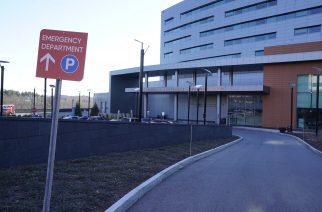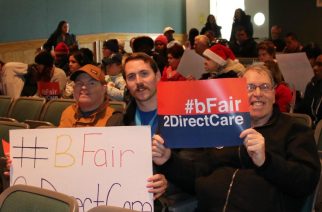
Hoping for a cure for cancer, heart disease, or even blindness, is a subject that unfortunately consumes most of us at least once in our lives. Whether you are the patient, a loved one, or a researcher like me, making medical progress against diseases that are too often death sentences or devastating to quality of life is an urgent matter.
To that end, when scientists first discovered how to harness stem cells from tissues for therapies such as bone marrow transplant and skin replacement for burn victims, a medical revolution was born. Decades later, we have made much progress. Within the last 20 years, human pluripotent stem cells have been established, opening tremendous new possibilities for regenerative medicine. Pluripotent stem cells, simply put, are versatile and endless. They have the unique ability to develop into many different types of cells, making it possible to study diseases in any part of the human body, or repair and replace any damaged body tissue. They allow researchers to mimic diseases in labs so they can study the progression of diseases, develop personalized treatments, and test existing drugs for new uses. And, they can replicate indefinitely, making them abundant.
Scientists all over the world are using tissue-derived or pluripotent stem cells to find new treatments and cures for diseases like Parkinson’s, multiple sclerosis, Alzheimer’s, diabetes, cancers, sickle cell anemia, spinal cord injury and more. At the Neural Stem Cell Institute, my husband Dr. Jeffrey Stern and I, and our dedicated team of scientists, are studying Age-related Macular Degeneration (AMD) — the leading cause of blindness in the elderly – which affects 1 in 5 people over the age of 75. As AMD progresses, patients lose the ability to recognize faces, or to read. They lose their independence and their quality of life deteriorates. We are using adult retinal pigment epithelial stem cells to develop an effective treatment for dry AMD, a currently incurable disease. Our collaborators at clinical sites are now preparing to launch the first clinical trial to determine if this adult stem cell treatment for AMD is safe and effective. Our goal is to benefit patients in New York with this new potential therapy.
In the meantime, our spin-out company called Stem Cultures produces ‘Stem Beads,’ which were created to help sustain stem cell cultures for research. Scientists all around the world buy our sustained growth factor products from New York to further their own research in the field. This is just one example of how stem cell research leads to discoveries with potential to be revenue generators, in addition to being critical medical breakthroughs.
Stem cells are recognized as the foundation of Regenerative Medicine, and much of the progress in stem cell science has been made possible by funding from state governments. New York State created the Stem Cell Science program (NYSTEM) in 2007 to fund stem cell research. It has been tremendously successful, leading to more than $152 million in additional support from other sources, and creating over 750 jobs across the state.
NYSTEM funding was essential to support our research programs, including creating a pipeline of retinal therapeutics that we plan to move into the clinic for patients. Continued NYSTEM funding would dramatically accelerate transformative research throughout the state and support important clinical trials. The numerous scientific and health-related breakthroughs and talented, highly-trained researchers supported by the NYSTEM program are assets to the state, and they ensure that cutting edge regenerative medicine will be available here, to New Yorkers.

So today, as we celebrate Stem Cell Awareness Day, we look at how far we’ve come, and where we have yet to go, and take inspiration from the world-leading advances that the NYSTEM program has supported here in New York. We hope that New York State continues to be a global leader in stem cell science and medicine for many years to come.
By Sally Temple, Ph.D.
Scientific Director
Neural Stem Cell Institute









